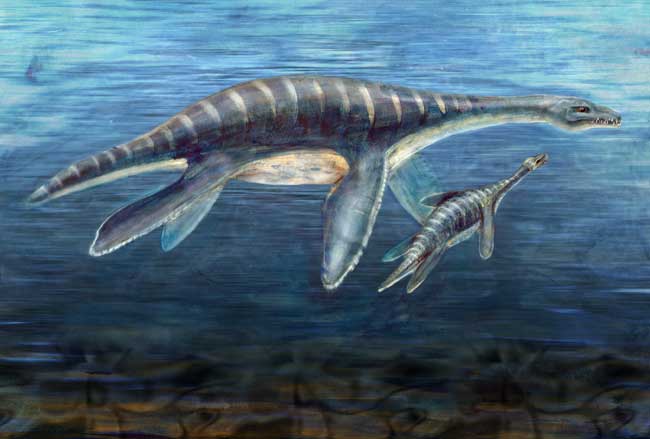Dinosaurs Dealt With Adolescent Pregnancies

Dinosaurs became sexually active as half-grown adolescents and were able to get pregnant as early as age 8, according to a new study.
Allosaurus, a carnivorous relative of Tyrannosaurus rex from the Jurassic Period, and Tenontosaurus, a herbivorous relative of the duckbilled dinosaurs, became pregnant well before they were full grown.
Scientists estimate Allosaurus took about 20 to 30 years to reach full maturity and Tenontosaurus about 15 to 20 years.
The study team cut open the arm and leg bones from 10 to 20 specimens of these two species of dinosaurs, ranging from juvenile to almost fully-grown. Similar to tree rings, growth lines in bones can be used to determine the age and growth rate of dinosaurs and other reptiles. The team found that it took these dinosaurs several years to three decades to grow up, and they most likely didn't live much longer afterwards.
“If you only live to be 30 or so and it takes about 25 years to finish growing, it really limits the amount of time you have to reproduce if you wait until you're done growing,” said study co-author Sarah Werning, a graduate student at University of California, Berkeley. “There's a definite advantage in doing it young rather than waiting.”
Dinosaurs, which laid eggs, deposited calcium in the marrow cavity of their bones just before laying eggs as a resource for making eggshells. Werning and her colleagues found that the leg bones of Allosaurus and Tenontosaurus contained a layer of calcium-rich bone tissue called medullary bone, indicating these adolescents died shortly before laying eggs. They also found this structure in T. rex based on data from other studies.
“Life was tough for dinosaurs,” said study co-author Andrew H. Lee, a postdoctoral fellow at Ohio University's College of Osteopathic Medicine in Athens. “Maturity while still growing is common in animals that have fairly precocial offspring and don't live long after reaching full-size.”
Get the world’s most fascinating discoveries delivered straight to your inbox.
The finding shows that dinosaurs grew like birds but had a reproductive strategy similar to mammals and crocodiles.
“In the family tree of life, birds descended from dinosaurs, but dinosaurs are also cousins to crocs and alligators,” Werning told LiveScience. Birds grow very fast, finish growing within a year, and don’t reproduce until after they’re finished growing. Crocs grow much slower but start reproducing before they’re done growing.
“We know dinos had a lot in common with birds, but we weren't sure when they reproduced. The evidence we had before this wasn't conclusive,” she added.
The study is detailed in the Jan. 15 issue of the journal Proceedings of the National Academy of Sciences.
- Dino Quiz: Test Your Smarts
- Image Gallery: Dinosaur Fossils
- All About Dinosaurs
 Live Science Plus
Live Science Plus






